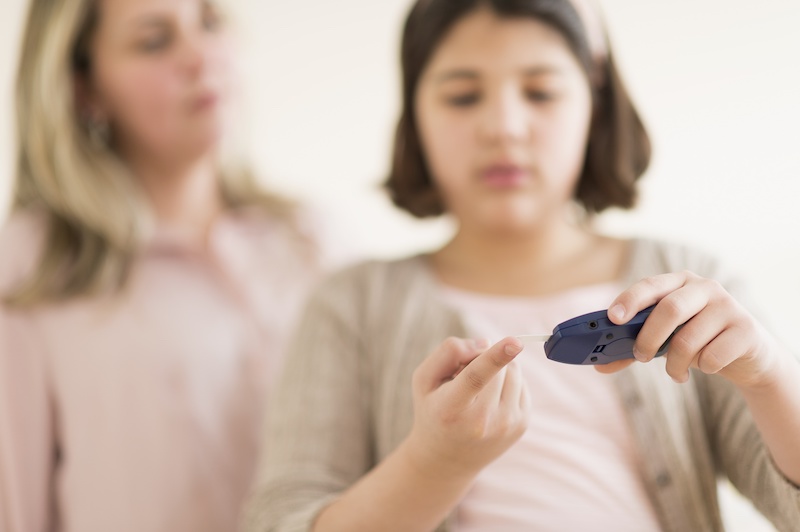
Photo courtesy of Getty Images
In the past 100 years, there have been tremendous discoveries and innovative breakthroughs in the field of diabetes. From the initial discovery of insulin in 1921 to the development of new technologies and immunotherapies to diagnose, treat and manage diabetes today, we have come a long way. These breakthroughs would not be possible without collaboration and research. We are so thankful to everyone who contributed to these successes, including our patients and their families for their willingness to participate in research studies, and to our clinicians, researchers, funders and pharmaceutical companies for their dedicated time, effort, expertise and resources.
As we celebrate the 100th anniversary of the discovery of insulin, here are some notable achievements that have pushed the field of diabetes forward:
- 1921: Dr. Frederick Banting, a young surgeon, and Charles Best, a medical student, discovered insulin at University of Toronto
- 1922: 14-year-old Leonard Thompson received the first insulin injection for treatment of diabetes at Toronto Hospital
- 1959: Two different types of diabetes were identified: insulin-dependent and insulin-independent, known as type 1 and type 2 diabetes, respectively.
- 1976: Wearable infusion pumps capable of delivering insulin was discovered.
- 1977: The hemoglobin A1c test to diagnose type 1 and 2 diabetes was introduced.
- 1993 and 1998: The Diabetes Control and Complications Trial (DCCT) and The United Kingdom Prospective Diabetes Study (UKPDS) showed that tight blood glucose control reduces complications of type 1 and type 2 diabetes, respectively.
- 1999: The Food and Drug Administration (FDA) approved the first-ever, physician-use continuous glucose monitoring.
- 2019: An immunotherapy, teplizumab, has been shown to delay progression of type 1 diabetes in high-risk population by modulating the immune system.
We learned so many inspiring lessons from Banting and Best’s discovery of insulin in the 1920s. Their experiments in an academic institution in Canada demonstrate a powerful lesson: Early career investigators, and even medical students, are capable of spearheading discoveries that could make a lasting impact on how we treat children and adults with diabetes today and in the future. Ideas matter and brightest ideas may come from the most junior physician-researchers. We encourage all juniors to dream bigger, work harder and make a long-lasting impact for society.
Secondly, Banting refused to put his name on the patent of insulin as he thought it would be unethical to make a profit from this discovery. He and co-inventors sold the insulin patent to University of Toronto for $1. In 1923, they exemplified the value of selflessness and the desire to help others. Let’s pause and reflect on what we can do to model their legacy.
Lastly, in 1923, the Nobel Prize Committee awarded Banting and his senior, Dr. MacLeod, the Nobel Prize for the discovery of insulin. Banting was not happy with this decision. He thought Best deserved the Nobel Prize too, so he shared his cash award with him. This is an incredible example of mentorship, and underscores the importance of giving credit to the one who deserves it regardless of one’s title.
In partnership with Baylor College of Medicine, the Diabetes and Endocrinology Center at Texas Children’s Hospital is committed to keeping Banting and Best’s legacies alive by cutting-edge research in diabetes. Research activities at our center include observational studies and clinical trials on both medical and behavioral aspects of diabetes. We participate in several multi-center clinical trials and lead many of these trials to improve the lives of youth affected by diabetes. We are excited to make innovative studies available for our patients from newer diabetes technologies to promising immunotherapies. Some examples include RADIANT (Rare and Atypical Diabetes Network), TODAY (The Treatment Options for Type 2 Diabetes in Adolescents and Youth), Type 1 Diabetes TrialNet, CITY (Continuous Glucose Monitoring Intervention in Teens and Young Adults with Type 1 Diabetes), DISCOVER (DIabetes Study in Children Of diVerse Ethnicity and Race) and PRISM (Promoting Resilience in Stress Management in Adolescents with Type 1 Diabetes).
As we celebrate the 100th anniversary of the discovery of insulin, let’s reflect on our past successes and focus our efforts on creating brighter futures. Where we are today would have been unimaginable 100 years ago. I strongly believe we fall short of imagining what the future will bring for diabetes care and even more importantly, its cure.
Texas Children's Diabetes and Endocrine Care Center is a leader in the research and treatment of children with diabetes and endocrine disorders. Click here to learn more about our services.
Disclosures: Dr. Mustafa Tosur serves as a consultant for Provention Bio, a biopharmaceutical company manufacturing Teplizumab.


